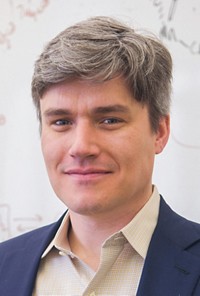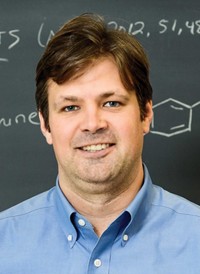Advertisement
Grab your lab coat. Let's get started
Welcome!
Welcome!
Create an account below to get 6 C&EN articles per month, receive newsletters and more - all free.
It seems this is your first time logging in online. Please enter the following information to continue.
As an ACS member you automatically get access to this site. All we need is few more details to create your reading experience.
Not you? Sign in with a different account.
Not you? Sign in with a different account.
ERROR 1
ERROR 1
ERROR 2
ERROR 2
ERROR 2
ERROR 2
ERROR 2
Password and Confirm password must match.
If you have an ACS member number, please enter it here so we can link this account to your membership. (optional)
ERROR 2
ACS values your privacy. By submitting your information, you are gaining access to C&EN and subscribing to our weekly newsletter. We use the information you provide to make your reading experience better, and we will never sell your data to third party members.
Materials
ACS Award In The Chemistry Of Materials
Sponsored by E. I. du Pont de Nemours & Co.
by Sophie L. Rovner
February 21, 2011
| A version of this story appeared in
Volume 89, Issue 8
Debra R. Rolison, a physical chemist at the Naval Research Laboratory (NRL) in Washington, D.C., “has made major contributions to the chemistry of materials,” according to Roald Hoffmann, professor emeritus of humane letters in Cornell University’s chemistry and chemical biology department. “A leitmotif of her work is her lack of fear of complexity and the absence of order in matter,” he adds. “In fact, Rolison’s strong point is her intelligent approach to complicated properties in forms of matter that most scientists would prefer to ignore,” he says.
Mark Ratner, a chemistry professor at Northwestern University, says that “Debra uniquely combines nanoscience, inorganic chemistry, electrochemistry, and materials chemistry to make new systems with unique and controllable properties.”
Rolison’s research involves the design, synthesis, characterization, and application of nanostructured materials for catalysis, energy storage and conversion, biomolecular composites, porous magnets, and sensors. She is being honored in particular for developing novel, multifunctional, ultraporous materials for battery, fuel-cell, and sensing technologies and for her fundamental studies into structure-property relationships of nanostructured materials.
Aerogels, which are highly porous, nanostructured networks, represent one important class of materials Rolison has investigated. She “has turned aerogel studies—a field that had long suffered from a lack of new ideas—into a fresh and innovative area of exploration,” says Stephanie L. Brock, professor of chemistry at Wayne State University.
“Prior to Rolison’s intervention in the mid ’90s, research was predominantly focused on the insulating applications of silica aerogels,” Brock explains. “Rolison’s recognition that the marriage of three-dimensional connected nanostructure with 3-D connected nanoscale porosity could be ideal for applications in electrochemistry, catalysis, and separations—provided that the inherent properties of the oxide nanostructure could be altered—was a critical development for aerogel researchers and those interested in designing functional nanostructures.”
Rolison developed a variety of synthetic procedures to incorporate metal clusters into aerogels. “These composites have electronic, electrochemical, and catalytic properties which in many ways surpass those of crystalline solids,” Hoffmann says.
Rolison also adapted tiny aggregates of metal atoms incorporated in zeolites—ordered silicate minerals that are full of precisely spaced and sized pores—for electrocatalysis. “It turns out that while these metal-spotted zeolites are exceedingly good catalysts, the metal specks can act as electrodes,” Hoffmann says.
In other work, Rolison devised a way to alter electrode morphology to extend battery life. She also designed a mild oxidative protocol that is more effective than conventional catalysts at removing organosulfur from petroleum distillates, which could aid producers in meeting the Environmental Protection Agency’s limits on sulfur content in fuel, Hoffmann notes.
Born in 1954, Rolison earned a B.S. in chemistry at Florida Atlantic University in 1975 and a Ph.D. in chemistry at the University of North Carolina, Chapel Hill, under Royce W. Murray in 1980. She joined NRL as a research chemist later that year. She is currently head of the lab’s Advanced Electrochemical Materials section and adjunct full professor of chemistry at the University of Utah.
Her other honors include election as a fellow of the Materials Research Society, the Association for Women in Science, and the American Association for the Advancement of Science. She has served on a number of editorial advisory boards.
Rolison will present the award address before the Division of Inorganic Chemistry.





Join the conversation
Contact the reporter
Submit a Letter to the Editor for publication
Engage with us on Twitter